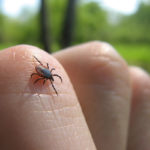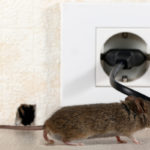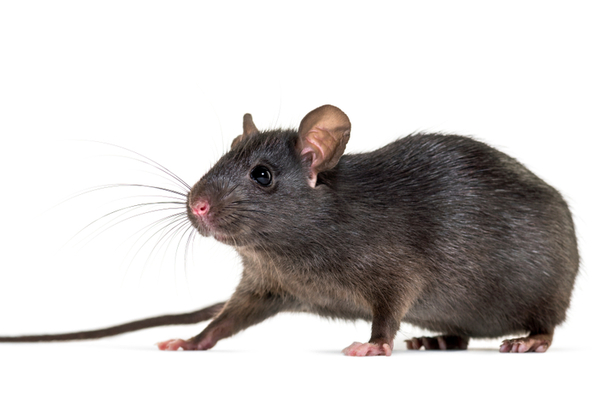
Pet rats can live for four years, but a rat in the wild generally only survives between 1 to 3, and many won’t make it past their first. Overall rat longevity varies by species and is highly affected by the availability of food and water and the prevalence of predators.
Rats are social creatures and prodigious breeders. Even if they live out a fast and hard life, they can leave behind a legacy of several litters. Understanding and interrupting the life cycle of invasive rats can help keep them from becoming a larger problem in your home or business. Here’s what you should know:
Rat Life Cycle
Rats come into the world blind, hairless and helpless, but they don’t stay that way for long. Litters average from 6 to 10 pups who adapt and mature quickly. The pup’s eyes open after 12 days and within three weeks they will be fully grown and weaned. This means a whole batch of young, eager and hungry rats set loose on the world in a very short time.
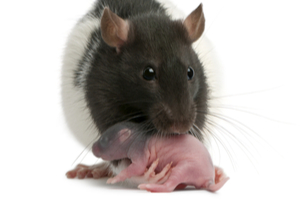
Rats reach sexual maturity after three months and will breed for about a year. The gestation period for a pregnant female is 21 days, then the cycle begins all over.
On average, a female rat will be able to produce five litters during her lifetime. Multiply that by ten pups/litter and you quickly realize that a single rat can be responsible for 50 new rats within the span of a year. This doesn’t take into account the offspring those new rats will produce once they reach their sexual maturity in three months, either. Any way you slice it, that’s a whole lot of rats.
Life of an Adult Rat
Adult rats spend most of their life foraging and mating. This makes them formidable pests. They are nocturnal animals who seek new food sources by night. Their heightened sense of smell and ability to squeeze into small areas has allowed them to integrate all too comfortably in urban areas where they eat nearly anything.
Rats are social animals who live and travel in packs. This means if you see signs of one rat, you’re probably seeing signs of many rats. Packs are formed when a male and female pair branch off into an uninhabited space. It doesn’t take long for more rats to appear on the scene after they nest. Male rats move on to new partners quickly after they’ve mated and don’t contribute to the upbringing of newborns (bunch of deadbeats).
Though rats can live up to three years in the wild, the University of Michigan estimates that 91% to 97% of wild rats die after one year. The most common causes of death are predators, disease and harsh conditions. Adult males are especially susceptible to cancer and kidney disease.
How Can I Tell If I Have Rats?
The two most common types of rats in Michigan are the Norway rat or brown rat and the Roof rat or black rat. They are noisy and messy invaders. Signs that there may be rats living near you include:
- Feces. Rats can produce up to 40 dark rice shaped droppings in a night. Look for them in basements and crawl spaces, especially along walls and corners.
- Oily rub marks and smudges. Rats have very poor eyesight and establish regular travel routes via touch to move around spaces safely. As they utilize these routes, the dirt and grease from their bodies eventually leave marks along surfaces as they rub up against. Check for these marks along walls in your basement.
- Bite marks. Rats need to constantly chew to keep their teeth from overgrowing. They’ll constantly gnaw on walls, floorboards, mesh, wiring… and pretty much anything else that’s soft enough to get a purchase on. This behavior is actually what makes rats dangerous, as they can start electrical fires if they chew through wiring until it sparks.
- Scratching and squeaking sounds. Rats climb and chew within walls. Their teeth make a grinding sound, and they squeak to communicate among themselves. Rats tend to hide in the day and resume activity at night, so you’ll probably hear them late.
- Nests. Rats build nests in lofts, attics or basements using foraged materials like insulation or cardboard. Check for these nests in secluded, cramped, and hidden places like beneath workbenches or shelving, corners, or even in ventilation systems
If you observe any of these signs, it’s time for a plan to remove the infestation before your rat population grows. Rats and mice in your home pose many risks.
How Do I Keep Rats from Living in My Home?
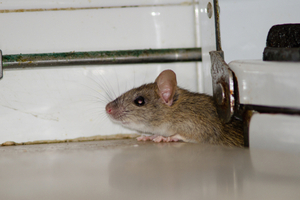
Rats are dirty animals that carry worms, ticks and diseases. They contaminate any food source they get into. Keeping rats out of your home or business means sealing your perimeter against invasion and preventing access to food sources. Here are a few preventive steps you can take:
- Seal cracks and holes in your home’s exterior.
- Cover chimneys, vents, and fans with mesh.
- Seal windows and door frames.
- Repair broken screens.
- Secure trash and compost.
- Clear leaf and brush piles in your yard.
Rats have an amplified olfactory system that can detect food smells through walls. They are very agile and can climb onto roofs and slip under doors and into cracks ¼” wide. Don’t underestimate a determined rat’s ability to breach your perimeter.
Hopefully with the right combination of rat control and prevention, you can reduce the average lifespan of rats in your home or business to zero. If you have rats inside already, it may be time to call in the professionals.
Call or contact us for a trained pest control technician to handle the dirty job of removing rats from your property and keeping them from coming back.

